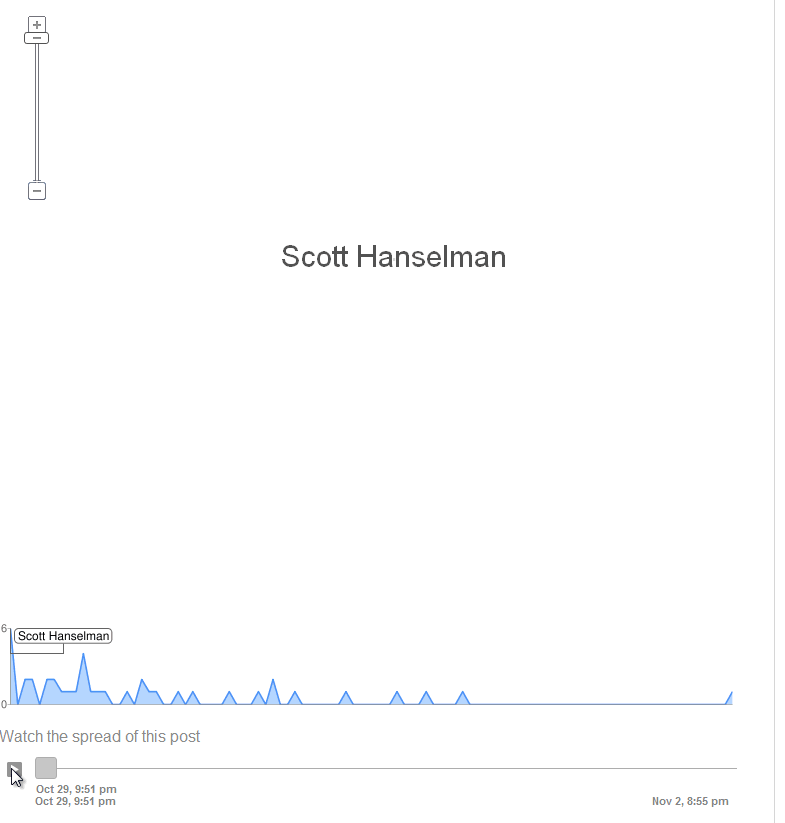Google+ Ripples brings something interesting to the table
I'm on Twitter. I'm on The Facebook. And, sigh, I'm on the snoozefest that has been Google+. I keep coming back to Twitter though for so many reasons
Twitter, today, is just easier to to use, the "What's happening" text box is always there, sharing is effortless. But the lack of real threading, of discussion, is starting to wear on me. Why do sites like even Storify exist? They are there to try to piece the shatter pieces of your Twitter discussion back together. Seriously, I challenge you to piece together anything two weeks after it happened on Twitter. How many retweets did your awesome Tweet get? 100+. Maybe more. You'll never know.
But, the Google+ mobile apps are a mess, so I've just not found a reason to spend much time on G+, except for the occasional Hangout. Until today.
Ripples. Wow.

Pick a post, like I did here, click the down-chevron and click "View Ripples."
Give the users their data. Give them analytics. Let them see how their data moves around the web and how it happened. Let them understand how the network lives and works with elegant visualizations. While you at it, animate the process. Brilliant.
Your move, Twitter. Now it's getting interesting.
About Scott
Scott Hanselman is a former professor, former Chief Architect in finance, now speaker, consultant, father, diabetic, and Microsoft employee. He is a failed stand-up comic, a cornrower, and a book author.
About Newsletter
The primary issue with Google+ is the barrier to posting. I can simultaneously post to Twitter, Facebook, Linked-In, FourSquare, etc. all from Tweetdeck or HootSuite. Google+'s lack of a read/write api means there is a "pain in the arse" factor to posting there.
I just tell people: you can find me on this cell phone, or better yet, msn messenger.
No, I don't have FB. No Twitter. No G+. No blog.
No BS cross domainers who put your data at risk.
You'll find me on MSN messenger. That's it. I drew the online-social line there, long ago; and I'm very happy with it. And I'm not wasting too much time on it, get what I want, and no privacy issues whatsoever.
Understanding G+ diagram
Comments are closed.
